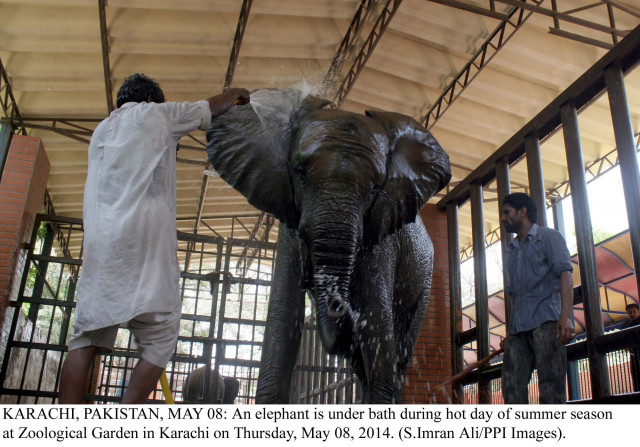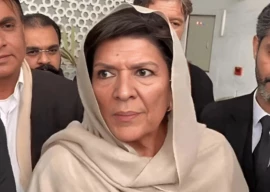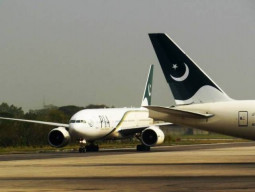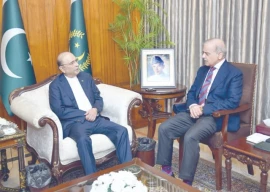
Four juvenile elephants were brought from Tanzania in 2009 to the park but two of the females were handed over to the Karachi Zoological Gardens in 2010.
The new enclosures
“The pair needs the enclosed space and we hope the visitors like it,” said Safari Park director Salman Shamsi, adding that they are expecting an increase in visitors during the summer holidays.

“The new shelter is more comfortable than the older one and it will help them fight the heat,” said the park’s additional director, Dr Syed Kazim Hussain, who also designed the enclosure.
A bathing pool is constructed just to the left of the enclosure where the pair can rest when it gets too hot. The elephants are given three showers a day and are often allowed to walk outside the enclosure, he added.
Dr Hussain informed The Express Tribune that the pair has been growing in size and it was time to move them to a more suitable enclosure. Malka is now 10, while Sonu is seven.
The local government minister, Sharjeel Inam Memon, inaugurated the enclosure along with senior Karachi Metropolitan Corporation (KMC) officials. Memon said that more funds will be allocated in the new budget for all parks and zoos of the city, adding that several parks have been occupied by land mafias. “A campaign has been started against the mafia which occupy recreational spaces,” he said.
Expensive animals
Each elephant eats about 300 kilogrammes of food daily and fruit is a vital part of their diet. Dr Hussain said that maintaining the diet of the elephants was not an easy task, especially considering financial constraints but insisted that it is vital that they are provided the food that they require. “A hungry elephant is a dangerous elephant,” said Dr Hussain, who believes that the pair are now in a comfortable environment and may breed.
The construction of the elephant enclosure, which started last year under the annual development programme, has been completed at a cost of around Rs20 million .
Not quite a safari
The Safari Park is the largest safari in South East Asia, covering a total area of 265 acres and has almost 470 animals. However, the only ‘big’ animal in the park are the elephants as four of the animals considered essential for safaris - lions, hippos, giraffes and rhinos - are all missing.
“All necessary measures are being taken to develop it into an internationally acclaimed recreation centre,” said KMC administrator Rauf Akhtar Farooqui, adding that the glaring lack of other big animals is not lost on the administration and promised that they will be brought to the safari soon.
While talking to the media, Farooqui said that the dearth of veterinary doctors in the Karachi Zoo and the Safari Park is being addressed gradually and the services of four doctors and zoologists have been acquired to ensure that the animals are looked after.
Published in The Express Tribune, May 9th, 2014.


















COMMENTS
Comments are moderated and generally will be posted if they are on-topic and not abusive.
For more information, please see our Comments FAQ